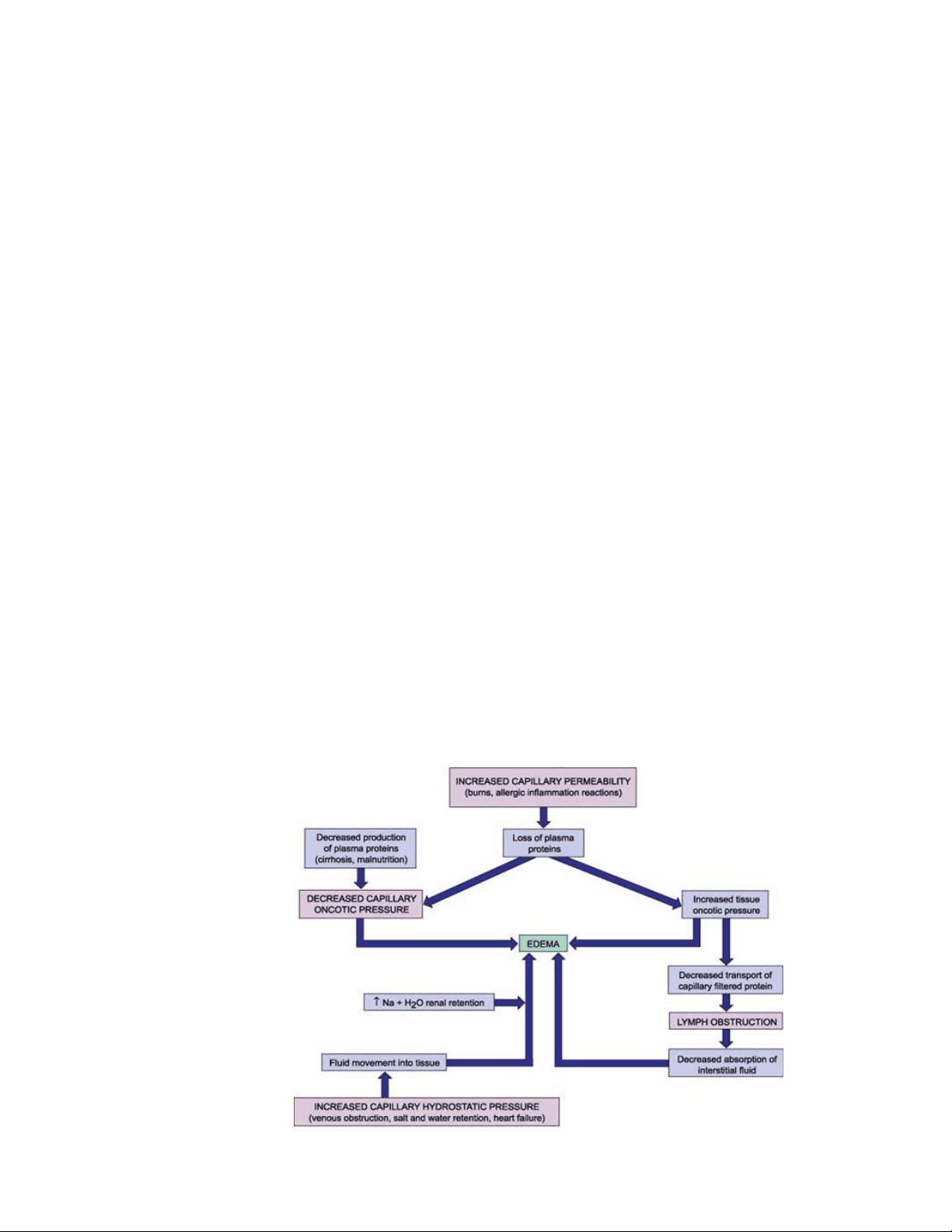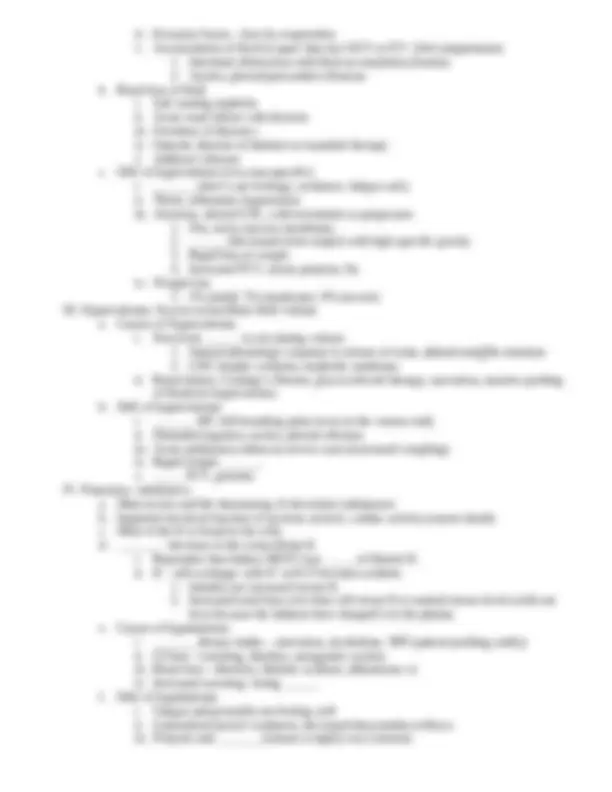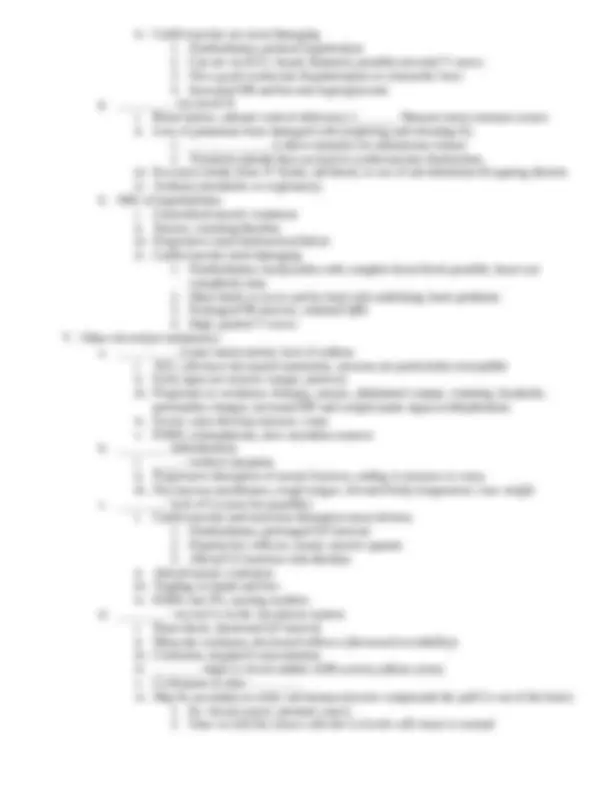




Study with the several resources on Docsity

Earn points by helping other students or get them with a premium plan


Prepare for your exams
Study with the several resources on Docsity

Earn points to download
Earn points by helping other students or get them with a premium plan
Community
Ask the community for help and clear up your study doubts
Discover the best universities in your country according to Docsity users
Free resources
Download our free guides on studying techniques, anxiety management strategies, and thesis advice from Docsity tutors
Patho Test 4 Material Type: Notes; Class: Biology 1 - Introduction; Subject: Biology / Biological Sciences; University: West Chester University of Pennsylvania; Term: Forever 1989;
Typology: Study notes
1 / 4

This page cannot be seen from the preview
Don't miss anything!



a. Categories of changes (is a lot of overlap) i. Volume--involve ECF compartments (vascular and interstitial spaces)
a. Pitting edema
ii. Dehydration—lose more _____ than ions
iv. Cardiovascular are most damaging